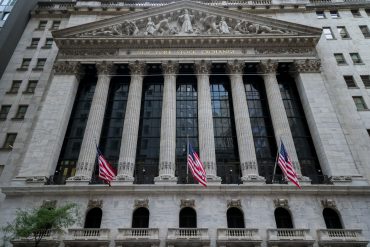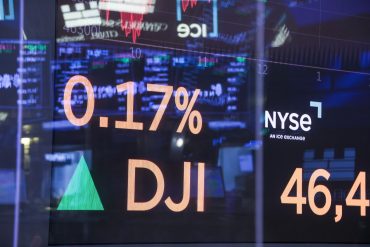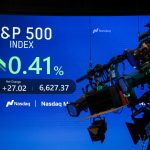
- Capital Markets
- Market Valuations
- U.S. Equities
S&P 500 Valuations Endure as Earnings Defy Recession
5 minute read

S&P 500 Valuations Withstand Market Pressures as Companies Maintain Earnings Growth Despite Persistent Recession Concerns.
Key Takeaways
- Valuation volatility signals market uncertainty as the S&P 500’s forward P/E ratio declined from 22.2 in January to 18.4 in early April before recovering to 22.5 by late September, with tech stocks experiencing similar fluctuations.
- Economic fundamentals, particularly recession risks, drive bear markets more than high valuations alone, as most historical declines have been triggered by expectations of falling profits tied to economic downturns.
- Major U.S. indices have surged more than 30% from their April lows, underscoring market resilience amid ongoing valuation debates and intact earnings growth forecasts.
Introduction
Market valuations remain elevated across major indices despite periodic corrections, prompting scrutiny over the durability of current price levels. Research from Goldman Sachs underscores that bear markets are predominantly sparked by anticipated profit erosion from recession fears, rather than elevated multiples in isolation. This perspective highlights how economic contractions amplify downside risks by eroding corporate earnings while compressing investor multiples, fostering extended periods of market strain.
With recession risks now assessed at historically low levels below 20%, Goldman Sachs has elevated its year-end S&P 500 target to 6,800 from 6,600, reflecting renewed optimism for a soft landing that preserves corporate profitability. This bullish recalibration underscores the market’s growing conviction that resilient U.S. economic growth will sustain elevated valuations into 2025 and beyond, even as global uncertainties linger.
Key Developments
Market turbulence in early 2025 illustrated the potency of recession anxieties in briefly squeezing valuations, only for economic durability to spur a rebound. The S&P 500’s forward price-to-earnings ratio fell from 22.2 in late January to 18.4 by early April, amid heightened concerns over potential downturns. By late September, the multiple had climbed back to 22.5 as fears eased and projections for calendar-year 2025 earnings growth held steady at around 10%.
Tech stocks mirrored this trajectory, with the sector’s forward P/E dipping to 25.0 in early April—its lowest since late 2023—before rebounding toward 39 by mid-September, buoyed by AI-related optimism.
Current metrics point to broad premium pricing in the market. The S&P 500’s forward P/E of 22.5 exceeds its five-year average of 19.9 and 10-year average of 18.6, reflecting sustained investor bets on robust earnings trajectories.
Market Impact
History illuminates the atypical resilience of today’s environment. In conventional recessions and bear markets, the S&P 500’s forward P/E typically plunges into single digits amid crumbling earnings and sentiment. Yet the 2022 downturn, fueled by aggressive rate hikes, bottomed at just 15.3—well above those norms— as a feared recession never fully emerged, preserving relatively high multiples.
Since April’s troughs, the S&P 500 has advanced over 33%, alongside double-digit rallies in the Dow Jones Industrial Average and Nasdaq Composite, affirming faith in economic steadiness and profit expansion. This rebound, one of the steepest non-recessionary climbs in two decades, signals that absent earnings erosion, high valuations pose limited immediate threats.

Strategic Insights
The technology sector grapples with acute valuation strains as AI adoption reconfigures operations and expectations. AI-centric stocks endured sharp pullbacks during the early-year tech rout, fueling sector turbulence. Firms are pivoting to AI-centric workflows, with pricing evolving toward outcome-based models that tie fees to tangible client results over legacy structures. Such adaptations could validate premiums by enhancing efficiency and profitability.
Elevated multiples permeate beyond tech, underscoring cross-sector enthusiasm for earnings upside. Investor sentiment, as gauged by forward multiples, anticipates sustained growth across diversified areas, though risks from policy shifts like tariffs could test this outlook.
Expert Opinions and Data
Goldman Sachs strategists note that bear markets rarely ignite from valuations alone; instead, they stem from profit warnings linked to recession probabilities, which remain subdued for now. Multiples often snap back if downturns prove unfounded, enabling earnings momentum to underpin prices. Their models project S&P 500 earnings per share rising 7% in 2025 and 2026, supporting a forward P/E expansion to 22x amid falling real yields.
Anticipation for quantifiable AI payoffs in 2025 points to a maturation phase, emphasizing viable deployments and enduring models. This pragmatic turn could mitigate overvaluation perils by anchoring tech bets in verifiable financial gains.
Conclusion
The endurance of today’s market rests on economic fortitude over valuation recalibration, per prevailing analyses. Premium multiples could endure while earnings validate them and recession shadows stay at bay.
AI’s overhaul of technology promises volatility alongside prospects, with dips potentially luring buyers at compelling levels. The rally’s vigor—fueled by resilient fundamentals—bespeaks trust in America’s economic core, even as indices command lofty tags. Yet as autumn unfolds, investors would do well to heed the seasonal uptick in volatility that history portends, tempering exuberance with vigilance against unforeseen policy crosswinds.
With recession probabilities now below 30% according to S&P Global Ratings, the trajectory points toward measured gains through year-end, contingent on the Federal Reserve’s calibrated easing and corporate America’s knack for defying gravity once more. In this delicate balance, the S&P 500’s elevated perch serves not as a harbinger of peril, but as a testament to the enduring allure of growth in an economy that refuses to falter.








